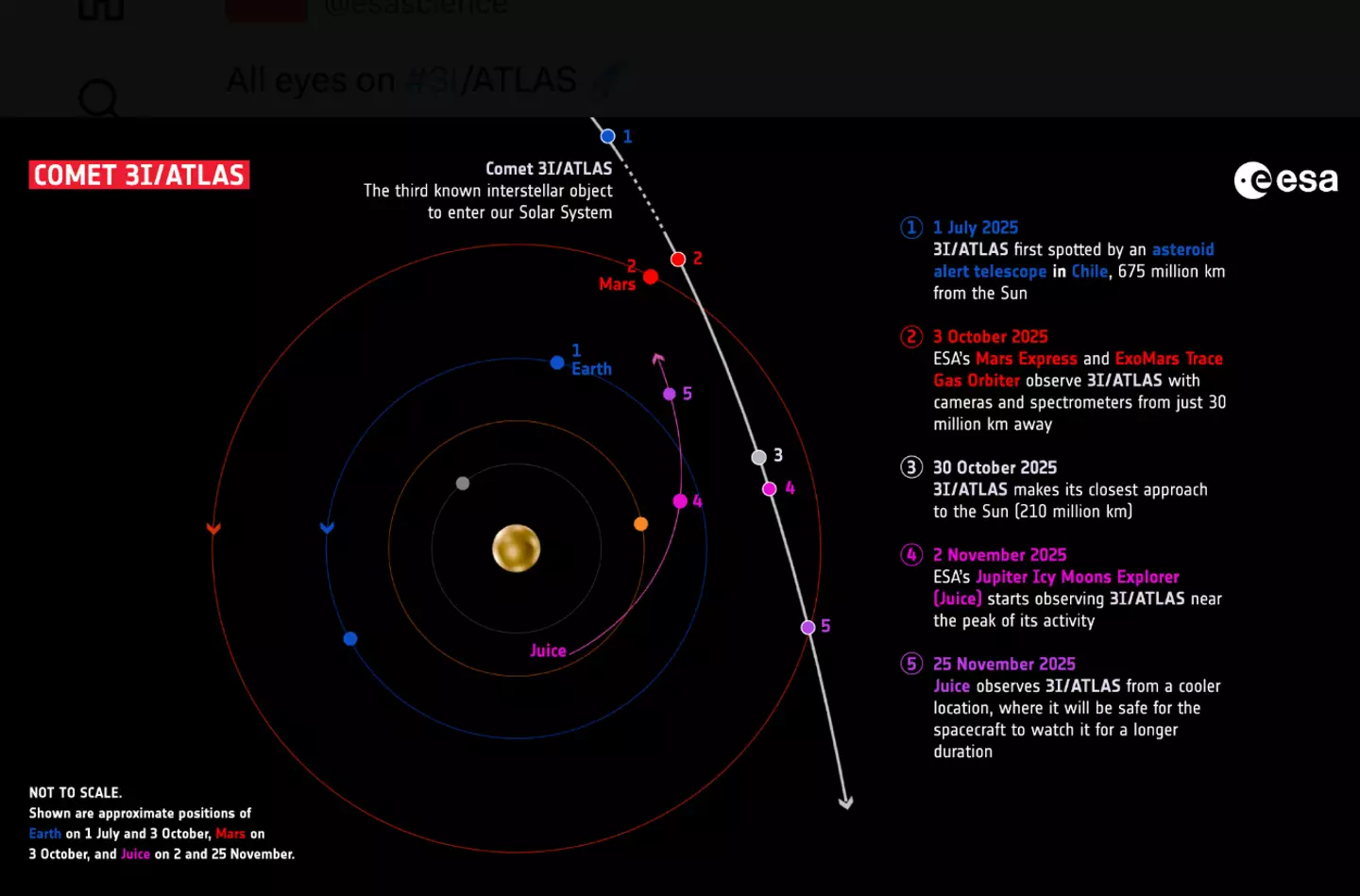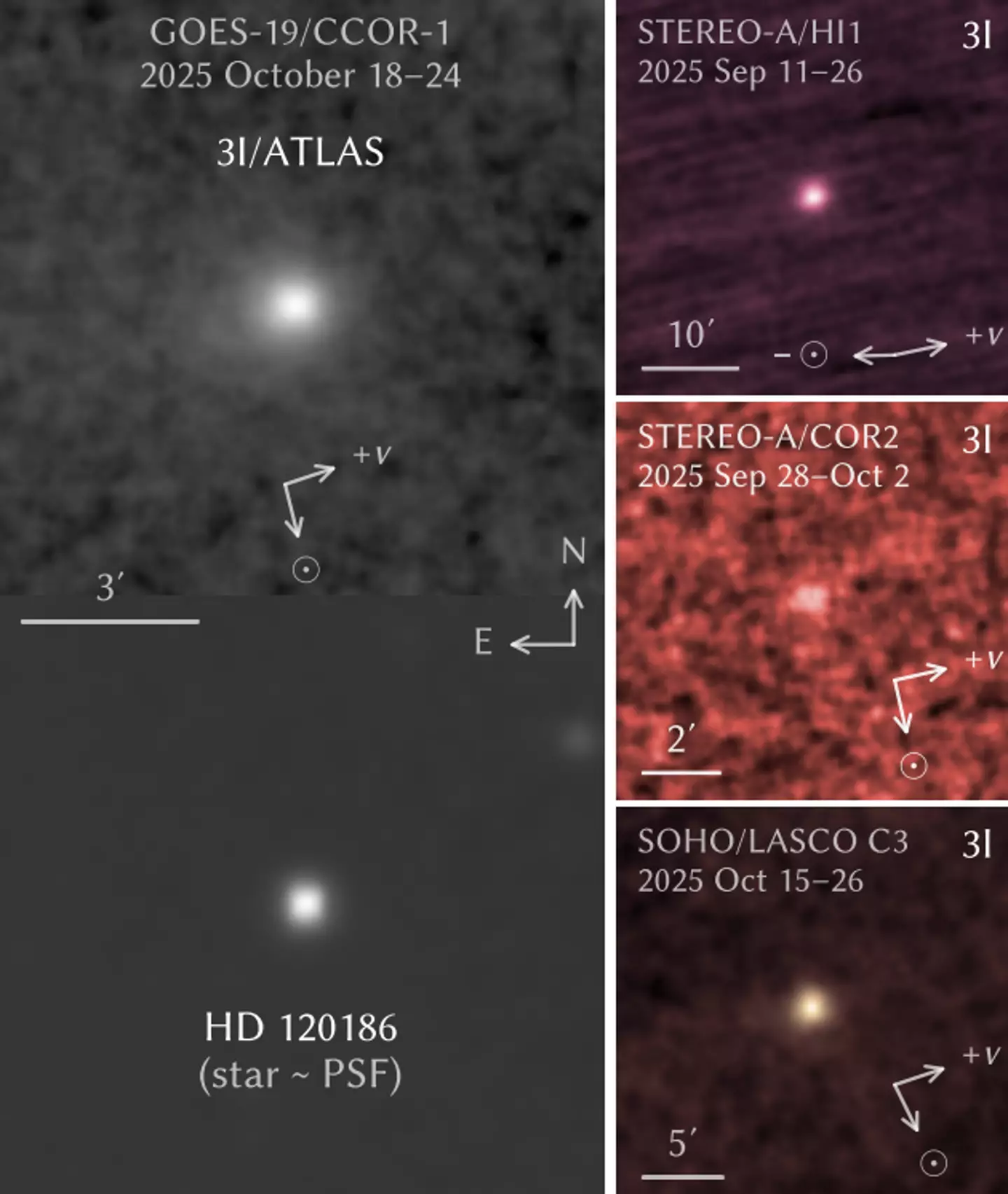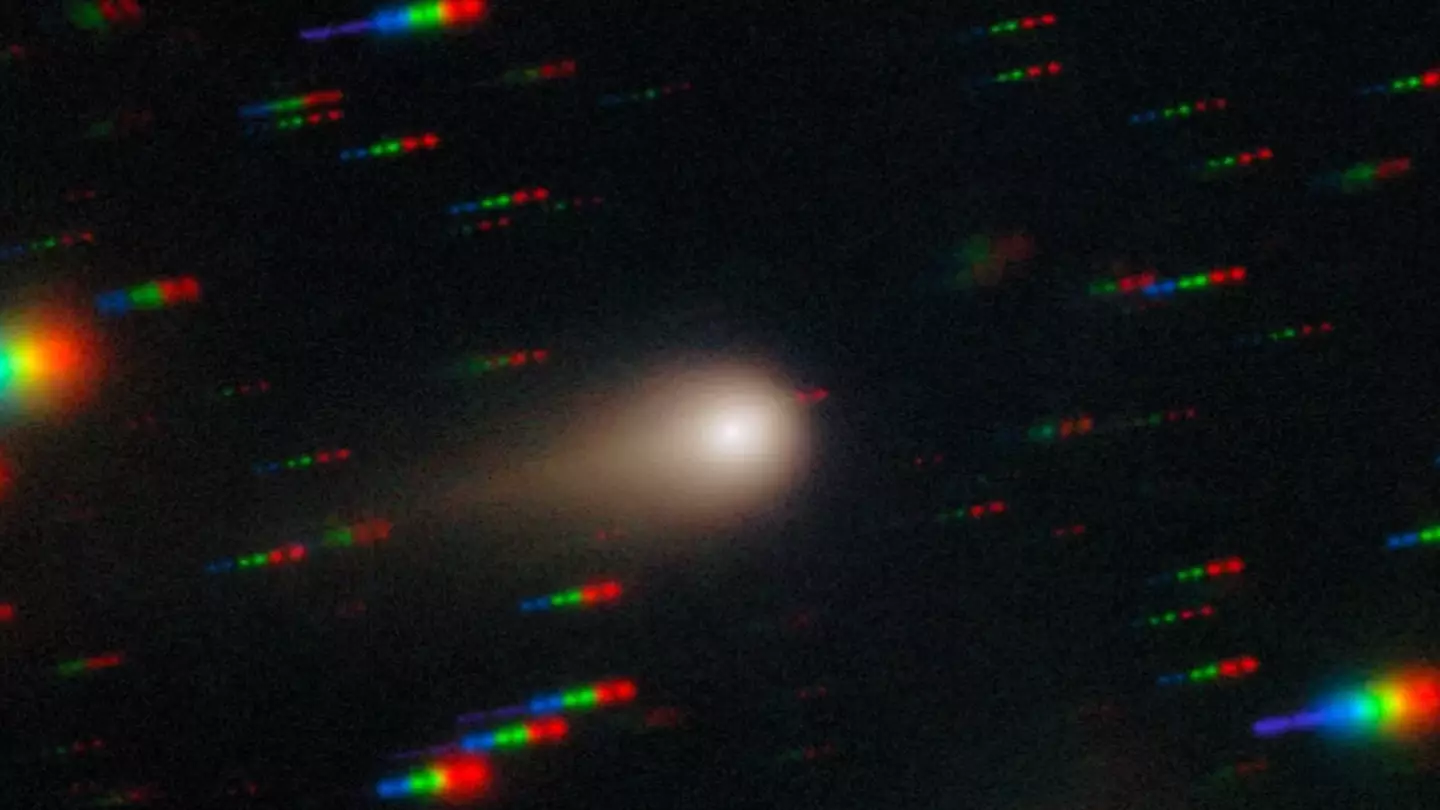An enigmatic object racing through our solar system has once more perplexed the scientific community.
The interstellar visitor, known as Comet 3I/ATLAS and referred to as the ‘interstellar invader,’ has begun to shine more intensely than researchers anticipated, leaving many without an explanation.
3I/ATLAS is only the third object ever known to have entered our solar system from another planetary system, following the unusual, cigar-shaped ‘Oumuamua (discovered in 2017) and comet 2I/Borisov (identified in 2019). These rare cosmic travelers provide scientists a unique opportunity to study the materials that form planets and stars beyond our own galaxy.
Researchers initially expected 3I/ATLAS to increase in brightness as it approached its closest point to the Sun, known as perihelion, which occurred on Wednesday (October 29). This is typical behavior for comets originating from the Oort Cloud, a distant, icy region.
When a comet heats up, its icy surface sublimates, turning directly into gas. This process releases dust and ice that form a glowing halo and tail, reflecting sunlight, which makes the comet appear brighter.

Despite predictions, 3I/ATLAS is brightening significantly faster than anticipated.
“The reason for 3I’s rapid brightening, which far exceeds the brightening rate of most Oort cloud comets at similar r [radial distance], remains unclear,” noted Qicheng Zhang of Lowell Observatory, and Karl Battams of the US Naval Research Laboratory in a paper shared on arXiv.
NASA’s STEREO spacecraft, the Solar and Heliospheric Observatory (SOHO), and the GOES-19 weather satellite corroborated the unexpected rise in brightness. Ground-based telescopes will have to wait until mid- to late-November 2025 for the comet to reappear from behind the Sun.
Scientists have suggested several hypotheses—the unusual brightening might be due to the comet’s speed and path, or perhaps something unique about its chemical composition.

“Oddities in nucleus properties like composition, shape, or structure – which might have been acquired from its host system or over its long interstellar journey – may likewise contribute,” they added.
“Without an established physical explanation, the outlook for 3I’s postperihelion behavior remains uncertain, and a plateau in brightness – or even a brief continuation of its preperihelion brightening – appears as plausible as rapid fading past perihelion.
“Continued observations may help provide a more definitive explanation for the comet’s behavior.”
Currently, the scientific community remains puzzled. As the interstellar object continues its journey, Zhang and Battams hope that further investigation will reveal whether this comet is an extreme anomaly or something genuinely extraordinary, as Harvard astrophysicist Avi Loeb has speculated.
“It could indicate that it was an alien probe sent to do recon on Earth,” he told the New York Post.

